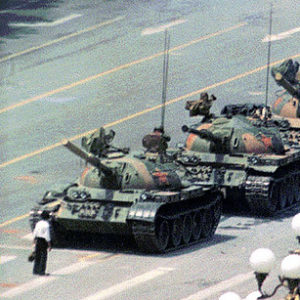Long ago, my wife introduced me to Plato’s “Allegory of the Cave,” which explores the divergence of perception from reality. Recently, my colleague Weifeng Zhong wrote about how Chinese propaganda distorted his youthful perceptions. I told him that, to a lesser extent, similar processes prevailed in my birthplace — Virginia under Jim Crow. Today, with social media platforms censoring scientific and political debate and the White House establishing (briefly?) an Orwellian “Disinformation Governance Board,” these lessons remain relevant.
In Plato’s allegory, Socrates describes people who have spent their lives chained within a cave, facing only a blank wall. Behind them, a fire burns. As people, animals and other objects pass by, prisoners see only shadows on the wall. Most assume the shadows are reality, but escapees (philosophers) discern otherwise, using logic to fathom the true nature of those objects. Others are content to know only the shadows.
In “Fleeting Freedom and Propaganda Lessons in Hong Kong,” Weifeng describes his 2006 arrival at the University of Hong Kong — nine years after China reclaimed the former British colony and Weifeng’s first time outside of Mainland China. On campus, he saw “a bloody-red sculpture of piled-up dead bodies with disturbing facial expressions.” Perplexed, he read the inscription, “The Tiananmen Massacre,” and, unaware that anyone died in the Tiananmen Square protests, wondered what it referenced.
For Weifeng, hundreds (thousands?) of slaughtered protesters didn’t exist. Hong Kong’s then-open society let him learn otherwise. (He notes that in 2021 the statue was removed amid Hong Kong’s fading openness.) Today, in America, Weifeng uses artificial intelligence to probe the shadows of Chinese propaganda — discerning truths about the country’s foreign policy, protester crackdowns and pandemic statistics.
Mid-century Virginia was governed by the fervently segregationist Byrd Machine. Driven from office in the 1960s, the machine’s fetid legacy persisted for decades.
In the late 1990s, my mother was around 75 years old, exceedingly intelligent and a lifelong history enthusiast in a state obsessed with history. I showed her a gut-wrenching documentary, “The Lynchburg Story,” about the 8,000-plus Virginians sexually sterilized by Virginia’s government from the 1920s through the 1970s—victims of an arrogant regime intent on perfecting the White race via the pseudoscience of eugenics. Mom asked, somberly, “Why didn’t I ever hear about this before?”
The reason isn’t much different from why Weifeng never heard about the Tiananmen Massacre. In Virginia, as in China, the government committed unspeakably cruel acts and wasn’t anxious to share that history. Virginia was immeasurably more open than China, but even here, we often saw only shadows.
In 2011, at age 89, Mom had worked for a decade as a tour guide at the museums and Civil War battlefields of our town. Steven Spielberg was filming “Lincoln” just a few steps from her office. Tony Kushner, the film’s screenwriter, visited the office a few times and asked Mom about the town’s history and architecture. When the movie came out, one prominent character was Elizabeth Keckley, an African-American seamstress who was Mary Todd Lincoln’s personal dressmaker and confidante. Mrs. Keckley was born into slavery just outside our town. For a time, she lived a short stroll from the building my parents purchased a century later for their store. Echoing our earlier conversation, Mom wondered why she had never heard of Mrs. Keckley, given the town’s enthusiasm for Civil War history. “You know exactly why,” I said. She nodded.
Our textbooks presented perverse views of antebellum life (e.g., “A feeling of strong affection existed between masters and slaves …”) Half the town was deeply proud of its Confederate ancestors, and a Lincoln confidante who purchased her way out of slavery was especially unlikely to enter our school lessons. Around age 4, I could recite the list of America’s then-34 presidents. But I only learned in adulthood that Gen. Winfield Scott — “foremost American military figure between the Revolution and the Civil War,” 1852 presidential nominee and the Union Army’s first commanding general — was also born just outside our town.
In Virginia’s schools, as in China’s, the shadows on our chalkboards reflected the government’s preferred narrative and disdain for “disinformation.” In 2022, as centralized authorities — public and private — again seek to curate public discourse, George Santayana’s words resound: “Those who cannot remember the past are condemned to repeat it.”

